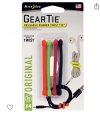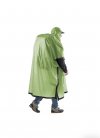I think I might now know the difference! Thanks to the OP for describing them in volume, I never thought of that!
[ for the OP:]
For my first Camino, I bought what I thought was a pretty good "Light Fleece" as everyone advises. Its a zip-up hoodie. Walking in April, I froze on a few days, and had to buy a heavy long sleeve extra layer to stave off hypothermia. I still have that fleece, and wear it around town from time to time. I just balled it up, and its lofted volume is about 2-3 litres. Its sweet spot is over a base layer. Works great from about 14-20 C, perfect for summer nights where I live.
For my next camino, I bought what I call a heavy fleece. Its not many more grams than the light one, maybe half again, buts its lofted volume is easily 5 litres, I just checked. Its literally the only article of clothing I have worn every day on every camino. It goes on when I get out the bunk, and comes off when the sun warms up. It goes back on the evenings when I'm sitting outside. Mind, I have only walked April and September, it wouldn't be needed in the summer. Its also my pillow, and where I keep my valuables. It takes up the same space as my down quilt, but does not challenge my 40 litre pack.
All that said, you need to have a solution that gets you down to freezing with some degree of comfort. Many like the down vests, others, like me, prefer the heavy fleece. A light fleece works too, you just need another long sleeve layer to go with it. Dealer's choice. And your rain jacket is not just for rain, its the best outer layer when its quite cold.


























